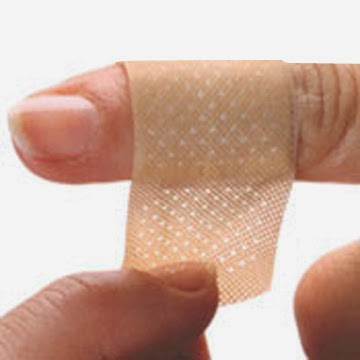Having a small wound on your finger, arm, feet, or wherever part of your body could be irritating. Besides the painful sensation, it is also prone to infections, which could lead to more severe injuries. Thankfully, the Band-Aid was invented.
Using a Band-Aid is one way to secure our wounds, and prevents it from causing infections. The Band-Aid helps in the healing process of a wound, wherein it cuts exposure from harsh elements.
When we were kids, we might be very familiar with Band-Aids since children often play a lot, which sometimes leads to minor injuries. Furthermore, even adults are prone to wounds when playing sports, as well as doing household chores. Most of the time, Band-Aids were used to treat and cover our wounds.
With this said, we can say that Band-Aid is one remarkable invention. In our modern world, every time we got a wound, we often look for a Band-Aid to cover it up. The popularity of the product skyrocketed and made it an icon when it comes to first-aid items.
Because of its brilliant design, we may come up with the question – who is the inventor of Band-Aid? Of course, an incredible invention must have an incredible inventor. Furthermore, similar to any other inventions, its history may either be a result of an accident or something triggered by necessity.
Who invented the Band-Aid?
For starters, Band-Aid is a brand of adhesive bandages. We can trace back the origins of this popular brand in 1920 when the American company named Johnson & Johnson was making surgical dressing materials for hospitals. However, Band-Aid was not in the list of surgical dressings the company was making, nor did they had any idea about the adhesive bandage.
One employee of the company named Earle Dickson came with the invention almost by accident. He invented Band-Aid without any prior research nor study, and the whole process happened randomly. The main reason behind this so-called accident is that Dickson’s wife Josephine would often get wounded doing household chores. This typical problem of Dickson led him to cover the wound of his wife with a cotton bandage, which falls off in some time. This occurrence became a frustration for Dickson; that is why he worked for a way to improve it.
Dickson assumed that he could improve this situation by sticking plaster. His solution to his problem was to smear an adhesive named crinoline on a thick cloth, and stuck plastic covering to it. The last step was to cut in stripes, which appears much longer than the usual Band-Aid. Dickson used his unique invention to treat his wife every time she would have a wound.
This invention of Dickson was so convenient to use that whenever his wife got a wound, he would just cut the rolled bandage in stripe and used it on the wound. The bandage would be stuck on the wound for days without falling off.
Because of its brilliant design, Johnson & Johnson bought the rights of Earle Dickson’s invention. However, instead of a rolled bandage, they started manufacturing it in the form of spare stripes and named the product, Band-Aid.
During the first few attempts to market the product, the company failed to sell and earn much. We can attribute its failure to its original quality was not as good as its successors. The original version of the Band-Aid was handmade, which significantly impacted its quality, one reason for it to lose the market.
In 1924, the company Johnson & Johnson introduced the machine-made version of Band-Aids, which gained recognition from the public. The company upgraded the product further, and in 1939, they began to sell the sterilized Band-Aids.
Years later, the Band-Aid had another new feature to introduce. In 1951, the company released the first decorative Band-Aids with a wide variety of themes of cartoon characters. The sales of Band-Aid skyrocketed, and its use became widespread all around the globe.
Since then, the standard Band-Aid had various upgrades and improvements, such as adding antibiotics, paddings, and liquid solutions to help in the healing process. As time went by, Band-Aids maintained its appeal to the public. That is why, until today, people across the globe are still fond of using this stripe bandages in covering wounds.

